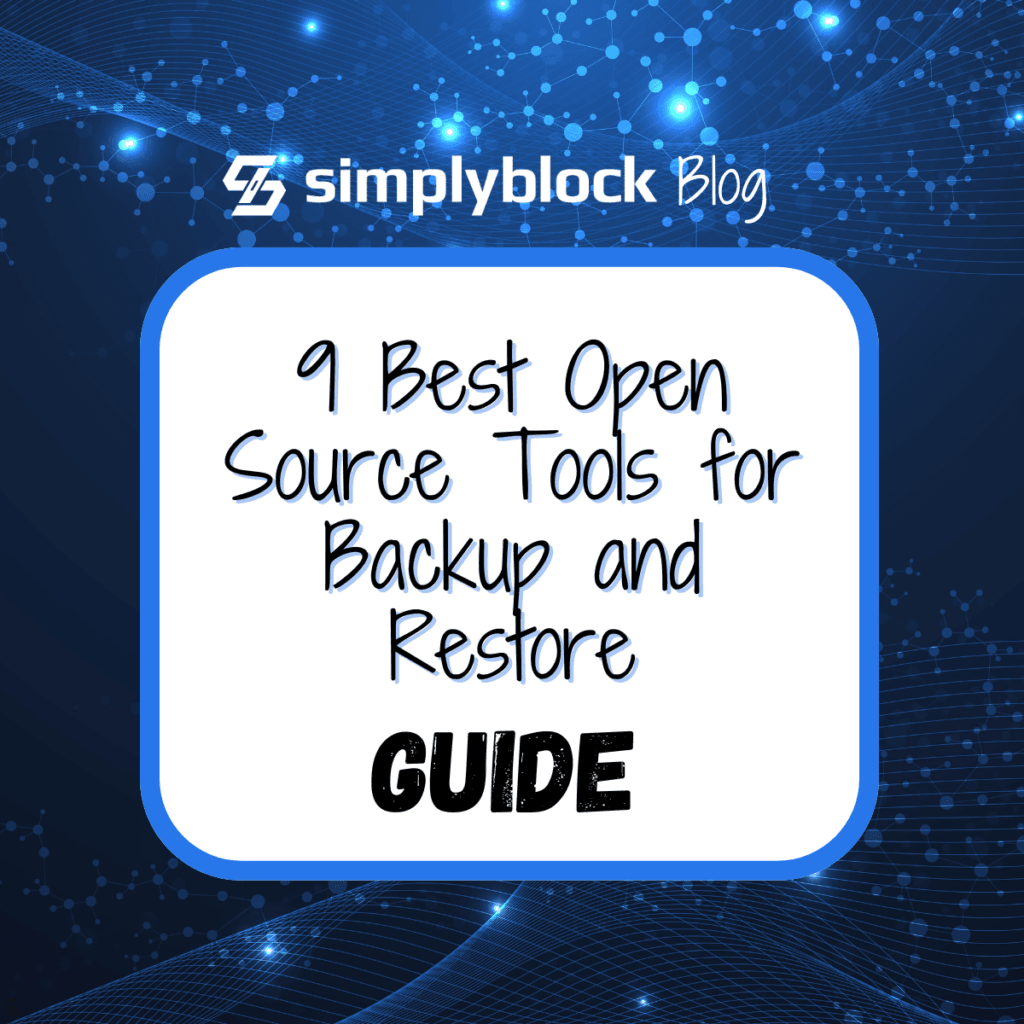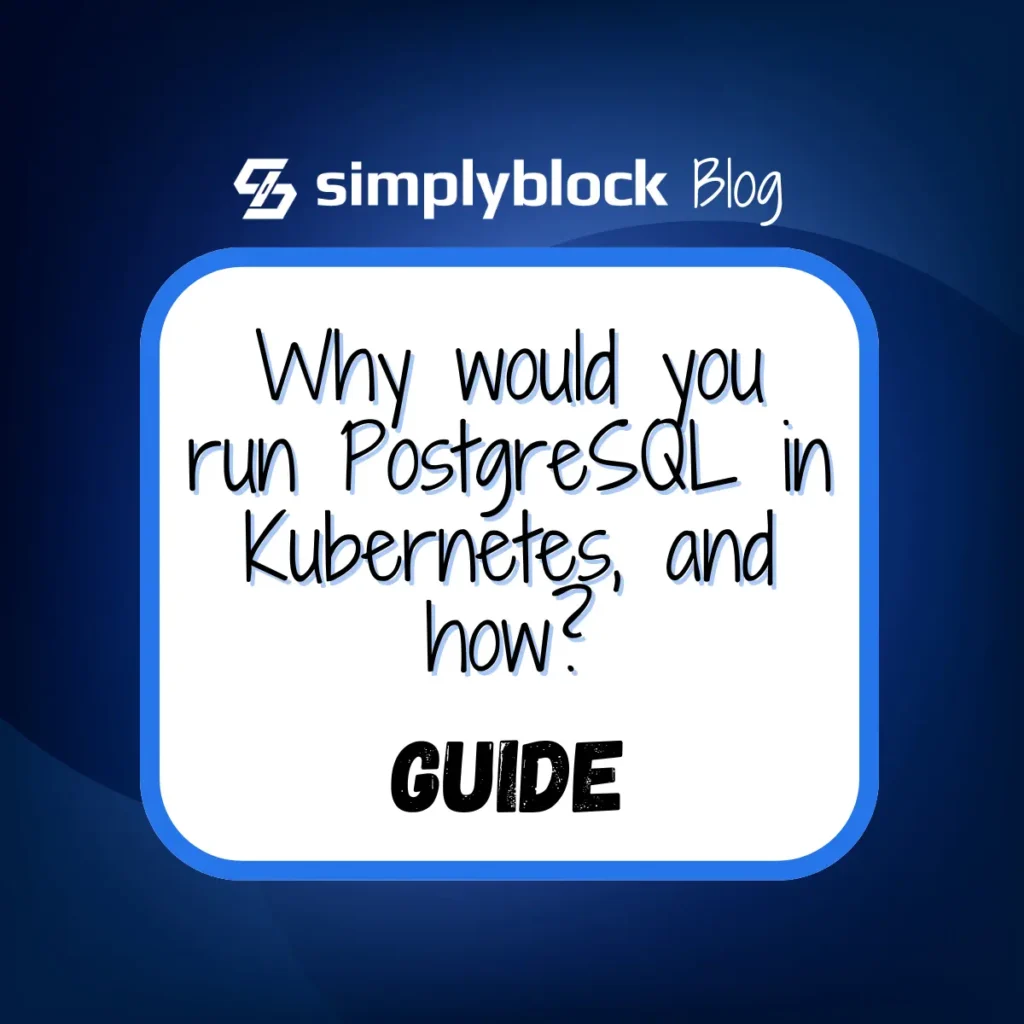
What are the best open-source tools for your Disaster Recovery setup?
In today’s digital age, disaster recovery is crucial to business continuity planning. The ability to quickly restore operations after a catastrophic failure—a hardware malfunction, data corruption, or a cyber attack—can mean the difference between a minor inconvenience and a major loss.
Open-source tools have emerged as invaluable resources for implementing and managing disaster recovery strategies. They provide flexible, scalable, and cost-effective solutions to ensure that data and services can be restored quickly and efficiently. As the importance of disaster recovery continues to grow, the demand for reliable open-source tools has surged. Organizations are constantly searching for tools to help them build resilient infrastructures that can withstand disruptions.
This post will highlight nine essential open-source tools to enhance your efforts.
1. Bacula
Bacula is a powerful open-source backup and recovery tool. It is designed to handle small and large-scale recovery operations and supports various types of storage devices. Bacula allows you to schedule backups, automate the recovery process, and monitor the status of your backups, making it a comprehensive solution for disaster recovery.
Running Bacula at scale? Simplyblock helps manage underlying storage and snapshots while supporting cross-region replication for faster disaster recovery.
2. Clonezilla
Clonezilla is a free and open-source disk imaging tool. It allows you to clone and backup entire disk partitions and supports many file systems. With Clonezilla, you can restore systems quickly in case of a disaster, ensuring minimal downtime. It’s an excellent choice for businesses seeking an efficient disaster recovery solution.
3. Amanda
Amanda (Advanced Maryland Automatic Network Disk Archiver) is an open-source solution that allows data to be backed up from multiple machines to a single server. It’s designed to handle local and network-based backups, providing flexibility in disaster recovery strategies. Amanda supports various platforms and can be configured to automate backup operations.
4. Duplicity
Duplicity is an encrypted bandwidth-efficient backup solution that supports incremental backups to local and remote storage locations. It allows you to securely store and recover data in case of a disaster. Duplicity’s encryption and compression features make it ideal for organizations prioritizing data security as part of their disaster recovery plan.
5. Zmanda Recovery Manager (ZRM)
Zmanda Recovery Manager (ZRM) is an open-source disaster recovery tool specifically for MySQL databases. It automates the backup and restore processes and allows users to create disaster recovery plans tailored to their database environments. ZRM supports point-in-time recovery, ensuring you can recover to the most recent state before a disaster occurs.
Simplyblock improves MySQL recovery with fast, crash-consistent snapshots and granular volume rollback — ideal for PITR scenarios.
6. DRBD
DRBD (Distributed Replicated Block Device) is an open-source distributed storage system that is highly available and can be used for recovery. It mirrors data between multiple systems to ensure a replica of your data is always available. DRBD is particularly useful for ensuring continuous availability in the event of a hardware failure.
Need extra redundancy? Simplyblock complements DRBD with multi-AZ volume failover and automated, near-zero RTO recovery.
7. Kubernetes Velero
Velero is an open-source tool designed specifically for Kubernetes clusters. It allows you to back up and restore your entire cluster, including persistent volumes. Velero is critical for quick recovery in Kubernetes environments, enabling you to quickly recover from cluster outages or data loss.
Velero protects Kubernetes — Simplyblock ensures the persistent volumes recover just as fast, with snapshot and CSI support.
8. Restic
Restic is an open-source backup tool that is fast, secure, and efficient. It supports encryption, deduplication, and incremental backups, making it a powerful tool for disaster recovery. Restic supports a wide range of storage backends, ensuring your data can be stored safely and retrieved quickly.
Restic encrypts and stores backups — Simplyblock makes them instantly recoverable via tiered NVMe-to-S3 snapshot management.
9. Rsync
Rsync is a versatile open-source utility for efficiently transferring and synchronizing files across systems. It’s commonly used for disaster recovery because it mirrors files and directories between servers in real time. Rsync ensures that your data is always available and up-to-date, even in the face of unexpected disruptions.
10. Simplyblock
Simplyblock provides advanced features for disaster recovery, whether talking about a lost availability zone, a region outage, or a widespread and successful ransomware attack.
By utilizing a block-level write-ahead log (WAL), simplyblock enables fast, near-zero RPO disaster recovery for individual logical devices or whole infrastructures.

Why Choose Simplyblock for Disaster Recovery?
While security tools help detect and prevent attacks, modern organizations need a reliable safety net for when breaches occur.
This is where simplyblock’s specialized disaster recovery approach creates unique value:
Zero Data Loss Assurance
Simplyblock ensures business continuity through automated backup and synchronization between multiple data centers. By implementing continuous data protection with near-zero RPO (Recovery Point Objective), organizations can maintain up-to-the-minute copies of their critical data, minimizing potential losses during a disaster or attack.
Near-Zero Downtime Recovery
In the event of a site failure or cyber attack, simplyblock enables rapid failover to secondary sites with near-zero RTO (Recovery Time Objective). The platform’s automated failover capabilities ensure minimal disruption to business operations, allowing you to maintain service availability even during major incidents.
Infrastructure-Agnostic Protection
Simplyblock’s approach to disaster recovery works across different infrastructure environments and data types. Whether protecting against ransomware, natural disasters, or system failures, the platform provides consistent, reliable recovery capabilities without the complexity of traditional DR solutions.
How to Optimize Disaster Recovery and Backup with Open-source Tools
This guide explored nine essential open-source tools for monitoring and managing threats to your data infrastructure. While these tools excel at different aspects of security – from vulnerability scanning to intrusion detection – implementing a comprehensive disaster recovery strategy remains crucial.
Security tools provide the first line of defense, but robust backup and recovery capabilities ensure business continuity even when those defenses are breached.
If you’re looking to further streamline your disaster recovery efforts, simplyblock offers comprehensive solutions that integrate seamlessly with these tools, helping you get the most out of your recovery plan.
Ready to optimize your disaster recovery strategy? Contact simplyblock today to learn how we can help you build a resilient, high-performance solution tailored to your needs.
Questions and Answers
Disaster recovery in cloud environments refers to the strategies and tools used to restore data, applications, and infrastructure after a failure or cyberattack. It ensures business continuity by minimizing downtime and data loss, often using snapshots, replication, and backup systems across availability zones or regions
Top open-source tools for cloud disaster recovery include Velero for Kubernetes backup, Restic for encrypted backups, and Duplicity for incremental archives. These tools help automate snapshots, manage restore points, and streamline multi-cloud or hybrid recovery strategies. Kubernetes backup solutions can further enhance your setup.
Simplyblock enables reliable RTO and RPO reduction with instant snapshots, replication, and fast failover options. It supports Kubernetes and virtualized environments, making it ideal for high-availability infrastructure and modern DR strategies using NVMe over TCP.
Recovery Time Objective (RTO) and Recovery Point Objective (RPO) define how quickly systems must recover and how much data loss is acceptable. Lower RTO and RPO values require faster backup and replication solutions, which are critical when using open-source DR tools or planning cloud storage disaster recovery.
Backups are copies of data stored for recovery, while disaster recovery includes the full strategy to restore systems, applications, and data. Backup is a component of DR. Open-source tools often combine both features, and platforms like simplyblock simplify data management and failover.





